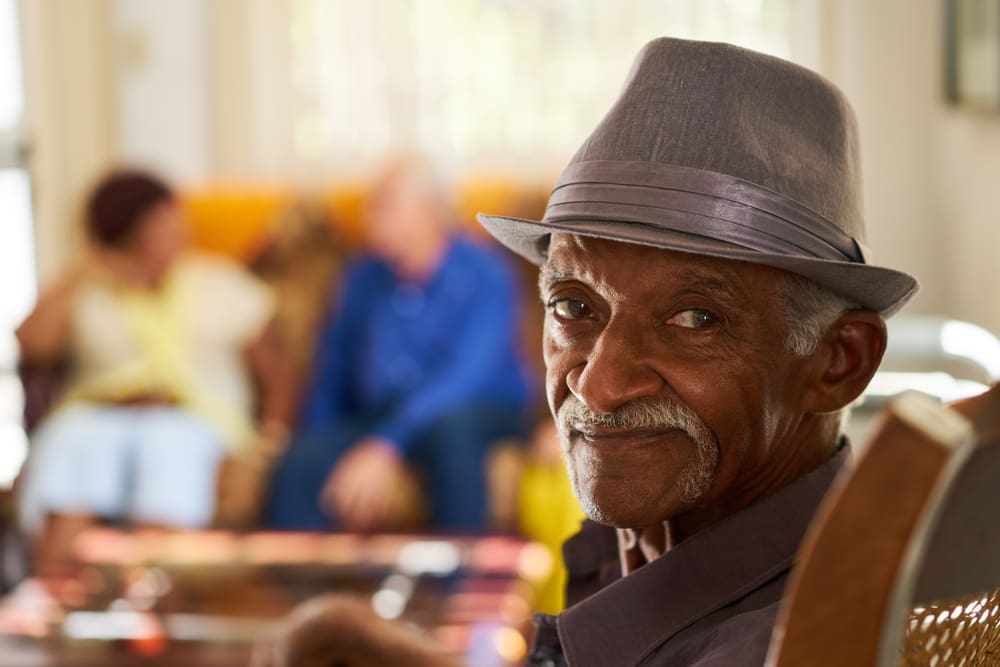Your alarm blares at 5 AM for that punishing workout. You gulp down that trendy superfood smoothie. You meticulously plan your day while rushing out the door. But what if the secret to exceptional longevity looks nothing like the high-octane morning routines celebrated on social media? The world’s longest-lived people often start their days with rituals that seem almost suspiciously simple and decidedly low-tech. Across the globe’s longevity hotspots, from Okinawa to Sardinia, people who routinely blow out 100+ birthday candles share morning patterns that might make productivity gurus scratch their heads. Yet these understated habits may contain profound wisdom about sustainable wellness that outlasts fleeting health trends.
Why the first hour matters more than you think
The morning hours appear to hold special significance for establishing patterns that support extreme longevity. This isn’t about squeezing more productivity into your dawn routine but rather about setting a particular tone and rhythm that your body maintains throughout the day.
Chronobiology research suggests that how we start our day calibrates numerous physiological systems, from stress hormones to digestion to inflammation levels. Morning habits essentially program our bodies for the hours ahead, establishing baseline patterns for blood pressure, glucose metabolism, and nervous system activity.
What’s particularly noteworthy among centenarians is their tendency to maintain unwavering morning routines. While younger generations often have wildly different weekday versus weekend patterns, the longest-lived individuals typically maintain nearly identical morning sequences regardless of the calendar day. This consistency seems to provide a physiological anchor that may contribute to metabolic stability and cellular resilience over decades.
The timing itself matters too. Centenarians across cultures tend to rise relatively early with the natural light cycle, but rarely at extreme hours. The pattern typically involves waking with the sun rather than fighting against natural circadian rhythms with artificial schedules. This alignment with natural light exposure appears to optimize hormone production, particularly melatonin and cortisol, which influence everything from sleep quality to immune function.
Perhaps most significantly, centenarians start their days without the rushed, cortisol-spiking stress that characterizes many modern morning routines. Their approach is almost universally unhurried, suggesting that how we transition into our active hours might matter as much as what specific activities we pursue.
The gentle movement patterns that trump intense workouts
Forget punishing predawn boot camps. Long-lived individuals typically begin their days with movement that emphasizes consistency and moderation over intensity, highlighting a fundamental difference in philosophy about physical activity.
Walking features prominently in almost every centenarian culture, often as the first significant physical activity of the day. In Okinawa, many centenarians take short morning walks to visit neighbors or nearby family members. In the Italian Blue Zone of Sardinia, elderly shepherds still walk early morning rounds to check on animals. These aren’t power walks with heart rate monitors but rather purposeful, moderate-paced movement integrated into daily life.
Gentle stretching systems appear across multiple longevity cultures. Tai chi in Chinese longevity regions and similar mindful movement practices elsewhere emphasize balance, flexibility and breathing rather than cardiovascular exertion or strength. These systems engage the body fully without depleting energy reserves for the day ahead.
Gardening in the cooler morning hours represents another common pattern, combining purposeful movement with connection to nature and food production. Many centenarians spend their early hours tending plants, an activity that provides variable movement patterns, light resistance work, vitamin D exposure, and even beneficial soil microbe contact.
The key difference from modern exercise approaches lies in the absence of physical stress and recovery cycles. Rather than intentionally depleting themselves through intense workouts that require recovery, centenarians engage in sustainable daily movement that energizes rather than exhausts. Their morning activities integrate seamlessly into daily living rather than existing as separate “exercise” segments requiring special clothes, equipment or recovery protocols.
Perhaps most telling is what’s missing from centenarian morning movement patterns. You won’t find extreme cardio, heavy weight training, or anything requiring special equipment. The consistency and moderation of their approach stands in stark contrast to the “no pain, no gain” philosophy that dominates much of contemporary fitness culture.
The morning eating patterns that defy modern breakfast dogma
If you’re picturing centenarians eating elaborate superfood breakfast bowls or following strict nutritional programs, their actual morning eating patterns might surprise you. Across blue zones and longevity cultures, breakfast looks remarkably uncomplicated while defying many contemporary nutritional beliefs.
Smaller, later morning meals appear consistently among long-lived populations. Many centenarians eat their first food of the day after being awake for several hours, creating a natural, unintentional time-restricted eating pattern. This approach naturally limits the total hours of food consumption each day, aligning with emerging research on the benefits of giving digestive systems daily rest periods.
Plant-focused breakfast choices predominate across blue zones despite vast cultural differences. Whole grains, vegetables, and legumes frequently appear in morning meals, with minimal processing and simple preparation methods. In Okinawa, vegetable miso soup and small portions of leftover sweet potato might start the day. Ikarians in Greece often begin with herbal teas and small servings of beans or lentils with bread.
What’s notably minimal or absent from centenarian breakfast plates? Significant amounts of sugar, processed carbohydrates, and breakfast meats rarely appear in traditional morning meals of the longest-lived. While not strictly avoiding animal products, most consume them in much smaller quantities than typical Western diets, often as flavorings rather than centerpieces.
Beverages with breakfast tend toward the simple and traditional. Various teas feature prominently across Asian longevity regions, while coffee appears in Mediterranean blue zones. What’s missing are the sweetened coffee drinks, fruit juices, and other high-calorie breakfast beverages common in modern diets.
Perhaps most significantly, centenarians typically eat morning foods consistent with their overall dietary pattern rather than having special “breakfast foods” distinct from other meals. This approach stands in contrast to Western breakfast traditions that often include foods we wouldn’t consume at other times of day.
The mindset and social connections that start their days
Beyond movement and nutrition, centenarians typically begin their days with psychological and social patterns that may contribute significantly to their longevity. These mental and relational aspects of morning routines receive less attention than diet or exercise but appear consistently across blue zones.
Purposeful starts characterize most centenarian mornings. Having clear reasons to get out of bed, what the Okinawans call “ikigai” and the Nicoyans call “plan de vida,” appears vital for extreme longevity. This sense of purpose might involve responsibilities to family, community roles, or tending to animals or plants. The specific purpose matters less than having one that creates positive anticipation for the day ahead.
Morning social interaction occurs naturally in most centenarian communities, contrasting sharply with the isolated starts many modern adults experience. Whether gathering with family members in multigenerational households, meeting neighbors during morning walks, or participating in community activities, social connection typically happens early in the day rather than being delayed until evening hours.
Gratitude practices appear across cultures in various forms. While rarely labeled as such by the practitioners themselves, many centenarians begin their days with moments acknowledging blessings, often through religious traditions or cultural practices that have persisted for generations. These aren’t elaborate gratitude journaling sessions but rather brief, consistent acknowledgments of life’s gifts.
Stress management through contemplative practices features prominently, though rarely in formalized meditation sessions. Prayer is common across numerous centenarian communities, while others engage in quiet moments of reflection. These practices tend to be brief, consistent, and integrated into the natural flow of the morning rather than scheduled as separate activities.
Notably absent from centenarian morning mindsets is intensive planning and scheduling. Few begin their days making to-do lists or checking digital communication. The psychological pace matches the physical one, with an emphasis on presence rather than productivity as the day begins.
How to bring centenarian wisdom into your mornings
While we can’t replicate the lifelong habits, genetics, or environments of blue zone centenarians, we can extract principles from their morning routines that might be adapted to contemporary contexts. The goal isn’t perfect imitation but rather incorporation of the underlying patterns that appear most consistently.
Start by slowing the morning pace whenever possible. Even if you can’t eliminate time constraints entirely, creating pockets of unhurried time through earlier waking or simplified preparation can shift the physiological tone of your morning. This might mean preparing more the night before to reduce morning rush or simplifying breakfast to create space for moments of calm.
Prioritize natural light exposure early in your day. Whether through morning time outdoors, positioning your bed near a window, or even using specialized lighting that mimics natural dawn, aligning with light-based circadian cues appears consistently important among long-lived individuals.
Consider your first hour as setting your metabolic and stress tone. Even brief periods of gentle movement, moments of gratitude or contemplation, and delayed first meals require minimal time investment but align closely with centenarian patterns. These small shifts may have cumulative effects disproportionate to their apparent simplicity.
Emphasize consistency over intensity in morning movement. Walking, gentle stretching, or practical physical activities that can be maintained daily appear more aligned with longevity than punishing workout regimens that require significant recovery. The sustainable nature of the activity matters more than its intensity or calorie-burning potential.
Reconsider traditional breakfast timing and composition. Experimenting with slightly delayed first meals composed of simpler, less processed foods may better align with the nutritional patterns seen across blue zones. This doesn’t require adopting any specific cultural diet but rather emphasizing plant foods and modest portions.
Seek morning-specific purpose and connection. Finding small reasons to anticipate each morning and brief opportunities for early social interaction, even if just a short phone call or text exchange with a loved one, mirrors the purposeful, connected mornings typical among centenarians.
Why morning rituals might matter more than genetics
While genetic factors certainly contribute to exceptional longevity, research increasingly suggests that daily habits, particularly those that structure our rhythms, may exert even stronger influence on lifespan and healthspan. The morning hours appear especially important in establishing these patterns.
Circadian alignment through consistent routines appears to influence numerous longevity pathways at the cellular level. When our external behaviors match our internal biological clocks, we optimize hormone production, cellular repair processes, and metabolic efficiency. Morning habits essentially help synchronize these complex systems.
Stress regulation through gentle morning transitions may protect telomeres, the protective caps on our chromosomes that shorten with age and cellular stress. Centenarian morning routines universally avoid the cortisol spikes associated with rushed, high-pressure starts to the day.
Cumulative effects become significant over decades. While any single morning makes little difference, the patterns repeated over thousands of mornings create profound physiological impacts. The consistency of centenarian routines suggests this cumulative effect may be more important than periodic intense health interventions.
Habit sustainability matters more than theoretical optimization. The remarkable simplicity of centenarian morning routines highlights an often-overlooked truth about longevity habits, they must be sustainable for decades, not just weeks or months. Their approach emphasizes gentle consistency over perfection or intensity.
Beyond specific activities, centenarian morning routines embody a different relationship with time itself. Their unhurried, present-focused mornings suggest that how we experience and move through time may influence our physiological aging processes. This relationship with time might ultimately matter more than the specific foods eaten or movements performed.
The most profound lesson from centenarian morning routines may be their implicit rejection of the false choice between health and enjoyment. Their approaches nourish body and spirit simultaneously through simple pleasures, meaningful connection, and gentle movement, suggesting that sustainable longevity emerges not from discipline and sacrifice but from finding health-promoting patterns that enrich rather than constrain daily experience.


















